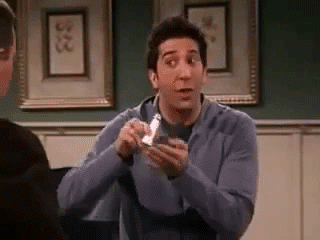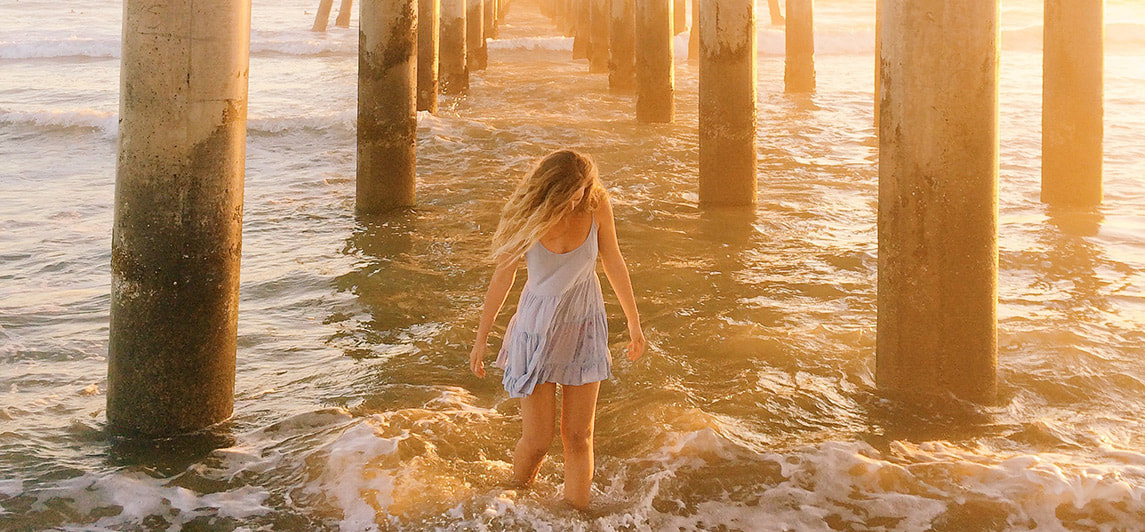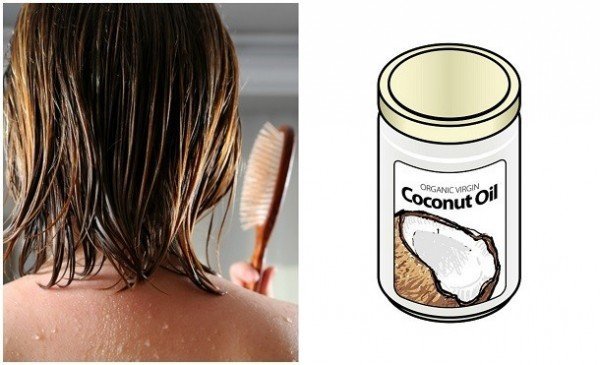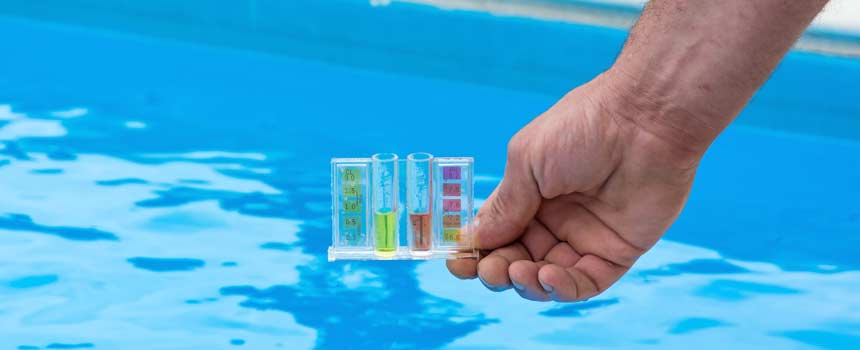|
6/30/2018 0 Comments Tips to Treat Your Sunburned ScalpWarmer weather is finally coming, and we all can’t wait to soak up the sun—but forgetting to protect your head can leave you scrambling to figure out how to treat a sunburned scalp.
While aloe will do the trick to treat your burn, it can get messy and greasy in your hair—so we’ve compiled a list of other treatments you can do at home to sooth your itching, burning scalp. Wash Away When it comes to washing your hair, you’ll want to ditch your normal volumizing or color-safe shampoo for a few days and instead opt for a exfoliating shampoo or mask while your scalp is still healing. Your head is desperate for moisture at the moment, and this is a great way to give it the hydration it needs while also helping to get rid of flakes. Speaking of flakes, while the dead skin may resemble dandruff, it should definitely not be treated like so. Avoid dandruff shampoos at all costs, as the chemicals in them might irritate your scalp even more. At Home Remedies Some of the quickest ways to relieve the burn can be found right in your kitchen. Within the first 24 hours of getting burned, whip up a quick Green Tea Rinse for your hair by steeping two Green Tea bags and cooling them to lukewarm in the fridge. Once you’ve shampooed, soak your hair in the tea for five minutes before rinsing. The antioxidants found in green tea will be ultra soothing to your scalp and help to alleviate the sting. Another option? Apple Cider Vinegar. Celebrities already claim it to be a miracle worker for the rest of your body, so it’s no surprise that the acid found in it will also help relieve your scalp. Mix one part Apple Cider Vinegar and one part water to create a mixture to be used after you shampoo and condition your hair. The last, and probably weirdest, at home remedy to use is 2% milk. The trick, used by dermatologists to treat chemical burns, is to soak a washcloth in ice cold milk and apply it to the scalp for up to five minutes. The enzymes and proteins found in milk promote healing, and the cold temperature will help reduce inflammation. Avoid the Itch Just like the skin on your body, your scalp is inevitably going to start to itch and peel. While it’s gross on your body, it’s even worse on your scalp because the dead skin will get stuck in your hair and start to resemble dandruff—and nobody wants that. As tempting as it is to scratch and pick at your head until it’s all gone, this is actually the worst thing you can do. Itching will only inflame the already sensitive skin and your fingernails could even cause an infection. Keep your hands away from your head as much as possible and do your best to let your scalp heal on its own. Simple Style We already have a red, peeling scalp (cute, right?) and don’t want to make matters worse by styling our hair incorrectly. Absolutely do not use heat tools near your roots (i.e. a blow dryer!) as it’ll only lead to more irritation and a longer healing process. If you can’t go a day without your blow dryer, limit the use to only your ends. But remember, there are plenty of ways out there to style your hair without heat and still look amazing. Another way to look cute and still protect your scalp is to switch up your part. The ‘90s Hair Flip is back in style, so play around with your look until you find the perfect part to hide your burn. This article first appeared on Stylecaster
0 Comments
6/27/2018 0 Comments Should I use… Salt spray?It’s been touted as a summer essential, but is salt spray the right product for you? Read on to find out how you can bring the beach to your bathroom… Why is it that your hair always looks great on the beach? All it takes is a quick dip in the ocean to bring out the best in it – tousled with plenty of volume and waves worthy of the sea itself. It’s no wonder that hair brands have tried to bottle this mysterious power, so you can have Bondi hair even if you’re going no further than Birmingham.
Bumble and bumble launched the first ever salt spray and Bb. Surf Spray has since achieved iconic status in the beauty world, bringing beachy style to dressing tables all around the world. Most haircare brands now have a salt spray of their own and it’s not hard to see why these products are so popular: “Salt spray will give you tousled, super textured, beachy waves without stepping a foot on sand or in the sea,” says Hayley Gibson-Forbes, co-director at SJ Forbes salons. “Our clients love the look, feel, and smell of a good salt spray, along with the added bonus that it is super easy to use as part of their at-home or holiday haircare regime.” So, how do you use it? “It is normally used as a styling tool once the hair has been cleansed and conditioned, giving the hair a gritty, look,” explains says Gorka Arraras, creative manager at Charles Worthington Salons. “Salt spray is great for fine hair, adding volume and texture as long as the amount applied is not overpowering.” And you can use it in different ways, depending how strong an effect you want – “It is best applied to the mid-length and ends of the hair. You can simply spritz onto dry hair and scrunch into locks for messed up texture, or spray onto wet hair and blow-dry for a more subtle, voluminous look,” says Hayley. However, as anyone who’s ever overindulged during a holiday will be able to tell you, you can have too much of a good thing. “Overuse of salt spray can lead to the hair feeling dry or matted,” warns Gorka. “To resolve this I would recommend weekly treatments or using a primer when blow drying. This will leave the hair nourished and in good condition without compromising on the styling. It will let you achieve the look that a salt spray gives without drying it out.” So, make sure that you treat your hair as nicely as you would after a day at the beach and top it up with plenty of hydration. If you find salt spray too drying on your hair, Robert Eaton, creative director at Russell Eaton salons, has some advice. “Clients often strive for that perfect beach look hair full of texture, however finding then perfect product can be difficult,” he says. “For me, it is all about creating the texture but in a non-abrasive way – there are some amazing products out there that do this but if you can’t find the right salt spray, have a play with some different dry shampoos.” Sugar sprays are also a good alternative – Paul Mitchell’s Neon Sugar Spray maintains softness and hydration, while Kérastase Aura Botanica Eau du Vagues has protective properties and is made of 98% natural ingredients. Or you can always go for a twist on the original – Bumble and bumbleoffers a whole range of sea-inspired products including a the Surf Foam Wash shampoo and conditioner, to build texture as you cleanse, and the Surf Infusion which is a salt spray infused with oil. Race you to the beach! This article first appeared on Layered From time immemorial, massaging the scalp with oil has proved to be immensely beneficial to the health of ones hair. Each oil brings it's own set of properties and essential benefits and there is no particular preference that one should look at while choosing oils.
Myna Batavia , Founder of Sinfully Myne, suggested a few benefits of oiling and how one can make the process worth applying. * In summer, hair tends to get very frizzy, dry and lifeless due to exposure to direct sunlight. Excessive heat also damages the hair extensively. While castor oil is known to be extremely soothing to the scalp, it is advisable to include ingredients such as Brahmi and camphor to the oil while massaging the scalp to reap benefits from their cooling properties. * Hair becomes extremely brittle due to prolonged exposure to heat, sweat and chlorine due to time spent in the swimming pool. To prevent this damage, it's advisable to use a combination of essential oils such as coconut oil, gingelly oil and castor oil along with aloe vera and white hibiscus leaves. The oils act as a sealant and seal the cuticles rendering one's hair shiny and soft. * The key benefit of the oils is the fatty acids present in them which replace the lost lipids in one's hair. Lipid loss is a major factor in causing split ends. The key to healthy hair is the right way of using the oils. Unless the hair is extremely dense, it is advisable to use a few drops in your palm, rub them together and rake them through your hair. If the hair is coarser, you can increase the quantity slightly. There are differing reports on the duration for keeping the oil on the hair. Beauty expert Aakriti Kochar too suggested some benefits of oiling in summer * Oiling your hair in summer creates a shield to protect your hair from Sun damage. Sun damage can result in over drying & dullness in hair texture. * Oiling strengthens hair from the roots, making it stronger and avoids breakage. This works all year long Coconut oil is very comfortable in summer since its lightweight. It nourishes your scalp and cleanses dirt and dead cells on the scalp easily on shampooing after oiling. * Almond oil is also a good hair cleanser and keeps hair healthy and facilitates hair growth as it is rich in Vitamin E. * Olive oil is also a great hair oil for summer because of its property of deep penetration. It seeps into the scalp and provides needed nourishment to hair & scalp from within. * Coconut oil protects your hair against the Sun's UV rays and avoids excessive dryness and burns. * Sweat and excessive oil secretion during summers can lead to oily dandruff in summers leading to dry brittle hair that also breaks easily. Almond oil has Vitamin E and also works again scalp infections caused due to excessive sweating (oil & sweat mix). It is excellent for treating dandruff. --IANS This first appeared on Business Standard VERIFY QUESTION
As we dive into the unofficial start of summer, we are also unknowingly diving into a summer hair problem. Fellow blondes, you can relate -- you've often noticed your hair takes on a green tint after a brief dip in the pool. Why do pools tend to turn blonde hair green? Let's comb through the truth. VERIFY SOURCE To VERIFY, we consulted the Materials Research Laboratory, co-sponsored by the National Science Foundation and the University of California - Santa Barbara. We also consulted the pool research website SwimUniversity.com. VERIFY PROCESS Both sources agree -- what turns blonde hair green in a swimming pool is not chlorine. At least, it's not chlorine, alone. Chlorine is clear, so the green comes from copper. Copper is in many swimming pools, especially the ones filled from well water and those filled with algaecides. The chlorine oxidizes the copper and then binds the hair to protein strands. Simple chemistry causes the hair to turn greenish. This happens to all hair. It's just more noticeable on blonde hair. So, is your hair safe in salt water pools? Not necessarily. Salt water pools take the salt and run it through an electrically-charged generator, essentially turning the salt into chlorine. When it reacts with copper, it creates the green. VERIFY CONCLUSION Copper causes hair to turn green when it reacts with chlorine or salt. Protect your hair by using a leave-in conditioner before swimming and washing your hair when you get out of the pool. You also could use a gloss coat that seals the hair cuticle. Or, you could just wear a swim cap. This fact was verified by WFMY News 6/20/2018 0 Comments How Will Chlorine Affect My Hair?How to Prevent Damage and Treat Chlorine Exposed Hair Chlorine, at least as far as your hair is concerned, is a chemical disinfectant added to the water in many swimming pools. If pool owners didn't use chlorine, you likely wouldn't want to swim in the slime-infested water, to begin with. Short, occasional exposure to chlorinated water really won't damage your hair. It may make it feel dry for a day or so, however.
Regular exposure to chlorinated swimming pools can cause significant damage to your hair. Disinfectants, in general, are used to break down and remove dirt, oil, and bacteria. Our scalps naturally produce oil to protect hair from damage and daily wear. Stripping the oil from your hair in a pool on a regular basis can cause over drying, increased porosity, and in some cases pretty significant damage if you don't take steps to prevent and treat your hair for chlorine exposure. Can Chlorine Turn My Hair Green? While it's true that chlorine gas is a greenish yellow color, chlorine does not turn your hair green, Anne Marie Helmenstine, Ph.D., explains in this article that it's actually oxidized metals (copper) in the water that bind to the protein in the hair shaft and deposit a green color. Now, before you go feeling bad for chlorine for getting a bad rap all these years, chlorine isn't completely innocent. As explained above, regular exposure to chlorine can cause dry, porous hair. Dry, porous hair (especially hair that has been chemically lightened or highlighted and is more likely to be damaged by chlorine exposure) is more likely to absorb chemicals and discoloration. Who Is at Risk for Chlorine Damage? Everyone that regularly exposes their hair to chlorinated water risks damage, but some hair types will damage faster or more severely. If your hair meets the following criteria, you will want to take extra care to prevent and treat chlorine damage:
How to Prevent Chlorine Damage You can do a few things immediately before and after you hit the pool to prevent chlorine from damaging your beautiful locks.
How to Repair Chlorine Damage If chlorine has damaged your hair, you'll know it. Chlorine damaged hair is very dry, frizzy (especially at the ends), bleached out, and often feels a little like straw. It tangles and mats up easily. These tips can help you revive your chlorine damaged hair:
This article first appeared on Live About |
Hair by BrianMy name is Brian and I help people confidently take on the world. CategoriesAll Advice Announcement Awards Balayage Barbering Beach Waves Beauty News Book Now Brazilian Treatment Clients Cool Facts COVID 19 Health COVID 19 Update Curlies EGift Card Films Follically Challenged Gossip Grooming Hair Care Haircolor Haircut Hair Facts Hair History Hair Loss Hair Styling Hair Tips Hair Tools Health Health And Safety Healthy Hair Highlights Holidays Humor Mens Hair Men's Long Hair Newsletter Ombre Policies Procedures Press Release Previous Blog Privacy Policy Product Knowledge Product Reviews Promotions Read Your Labels Recommendations Reviews Scalp Health Science Services Smoothing Treatments Social Media Summer Hair Tips Textured Hair Thinning Hair Travel Tips Trending Wellness Womens Hair Archives
July 2025
|
|
Hey...
Your Mom Called! Book today! |
Sunday: 11am-5pm
Monday: 11am-6pm Tuesday: 10am - 6pm Wednesday: 10am - 6pm Thursday: Closed Friday: Closed Saturday: Closed |





 RSS Feed
RSS Feed